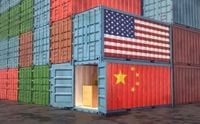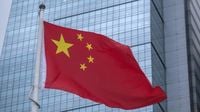In the ever-shifting landscape of global technology, the battle over semiconductor chips has reached a fever pitch, with the United States and China at the heart of an escalating contest. This week, a flurry of new proposals, policy reversals, and corporate maneuvering has thrown the future of the world’s most critical industry into fresh uncertainty—and the consequences could ripple far beyond the boardrooms of Silicon Valley and the halls of Beijing.
On September 9, 2025, the U.S. government signaled its intent to overhaul how American and allied chipmakers operate in China. According to reporting by Financial Times, Washington is considering replacing the current system of automatic export approvals for semiconductor supplies with annual licensing requirements for giants like Samsung Electronics and SK Hynix. These South Korean firms, which have long enjoyed a so-called “validated end user” status, can currently ship equipment and materials to their Chinese factories with minimal bureaucratic friction. But those authorizations are set to expire at the end of 2025, and the Biden administration is weighing a switch to a “site license” model that would force the companies to reapply each year for permission to send restricted chipmaking tools across the Pacific.
U.S. officials say the goal is to strike a delicate balance: allow existing factories to keep running, thus avoiding sudden disruptions to global supply chains, but block upgrades or expansions that could help China close the technological gap. “The measure would protect continuity of global supply chains while ensuring that cutting-edge chip technology does not flow freely into China,” sources told Financial Times. The decision is not yet final, with negotiations ongoing between Washington and Seoul—a reflection of just how fraught the issue has become for South Korea, which relies on the U.S. for security and on China for manufacturing muscle.
Meanwhile, Nvidia—the world’s leading supplier of advanced graphics processing units (GPUs)—has found itself at the center of a political and economic storm. As reported by Associated Press, the company has launched an aggressive lobbying campaign in Washington to fight proposed restrictions on AI chip sales to China. Nvidia is framing supporters of the so-called “America First” legislation as “A.I. doomers,” borrowing a term from Silicon Valley’s own philosophical skirmishes. The stakes for Nvidia are enormous: the Chinese market represents an estimated $50 billion in future revenue, and the company is eager to secure permission to sell scaled-down versions of its Blackwell AI chips—up to 50% less powerful than its flagships—in order to maintain its foothold.
The legislative battle centers on the Guarding American Innovation in Artificial Intelligence (GAIN AI) Act, introduced by Senator Jim Banks (R–Ind.) as an amendment to the Defense Department’s annual funding bill. The act would require U.S. chipmakers like Nvidia, AMD, and Intel to give American buyers first dibs on advanced GPUs before shipping them overseas, and would force exporters to obtain a license from the Commerce Department before sending “advanced integrated circuits” to “countries of concern”—a group that includes China. Banks has defended the measure as “common sense,” saying, “there’s nothing more ‘America First’ than making sure that our chips don’t go to our enemies to use against us.”
Nvidia, for its part, has pushed back hard. The company warns that the GAIN AI Act “would restrict competition worldwide in any industry that uses mainstream computing chips,” adding that it attempts to “solve a problem that does not exist.” Industry analysts and business groups have echoed these concerns, arguing that the proposal amounts to a government-imposed price control that would distort supply chains and disrupt global semiconductor markets. “American firms should focus on innovation and rise to the challenge, rather than tell tall tales that large, heavy, and sensitive electronics are somehow smuggled in ‘baby bumps’ or ‘alongside live lobsters,’” a Nvidia spokesperson quipped, referencing a recent Silicon Valley debate over chip smuggling claims.
The controversy comes on the heels of a chaotic year for chip policy. In April 2025, the Trump administration banned exports of Nvidia’s China-focused H20 chip, forcing the company to take a $5.5 billion writedown on unsold inventory. The move created a hardware vacuum that Chinese tech giant Huawei quickly filled, prompting a White House reversal in July: the H20 ban was lifted, but only after President Trump personally negotiated a deal requiring Nvidia and AMD to pay 15% of their China AI chip revenue to the U.S. government. “I said, ‘Listen, I want 20 percent if I’m going to approve this for you, for the country.’ And he [Huang] said, ‘Would you make it 15?’” Trump recounted. The government, in effect, became a stakeholder in chip sales to a strategic rival.
China, for its part, has not stood still. On July 31, 2025, Beijing’s cyberspace regulator launched a security probe into the H20 chips, citing fears of hidden backdoors or kill switches—a direct response to U.S. legislation like the proposed Chip Security Act. Nvidia issued a forceful denial: “There are no back doors in NVIDIA chips. No kill switches. No spyware. That’s not how trustworthy systems are built — and never will be.” Nevertheless, by late August, Beijing had informally urged Chinese tech giants to halt H20 purchases, prompting Nvidia to suspend production entirely. At the same time, China has doubled down on its quest for technological sovereignty, launching a major initiative to triple domestic AI chip output by 2026 and tasking Huawei with opening a new AI chip plant by the end of 2025.
Behind these policy battles lies a deeper, more uncomfortable reality: U.S. companies, including Nvidia, have played a pivotal role in building the technological foundations of China’s digital surveillance state. As Associated Press has revealed, American hardware and software have powered systems like the “Great Firewall” and “Skynet,” enabling mass censorship and surveillance—including the predictive policing platform used in the mass detention of Uyghur Muslims in Xinjiang. This legacy casts a long shadow over today’s debates, complicating claims of purely economic or innovative motives on either side.
The stakes are not just philosophical or political—they’re economic, too. A 2024 study by the Federal Reserve Bank of New York found that export controls led to a $130 billion decrease in market capitalization among affected U.S. suppliers within just 20 days. While the U.S. still claims more than 50% of global semiconductor revenues, its share of manufacturing capacity has plummeted from 37% in 1990 to just 10% in 2022, according to a joint report by the Semiconductor Industry Association, Boston Consulting Group, and Oxford Economics. Meanwhile, China—bolstered by $100 billion in government subsidies and its own export controls regime—is poised to become the world’s largest semiconductor manufacturing hub.
As the U.S. weighs new licensing regimes and Congress debates “America First” mandates, the future of the semiconductor industry hangs in the balance. Will protectionism and regulatory friction stifle innovation and competitiveness, as Nvidia and its allies warn? Or will tighter controls secure critical technologies and safeguard national security, as policymakers insist? The answer, for now, remains uncertain—but the decisions made in Washington and Beijing this year will shape the global technology landscape for decades to come.



